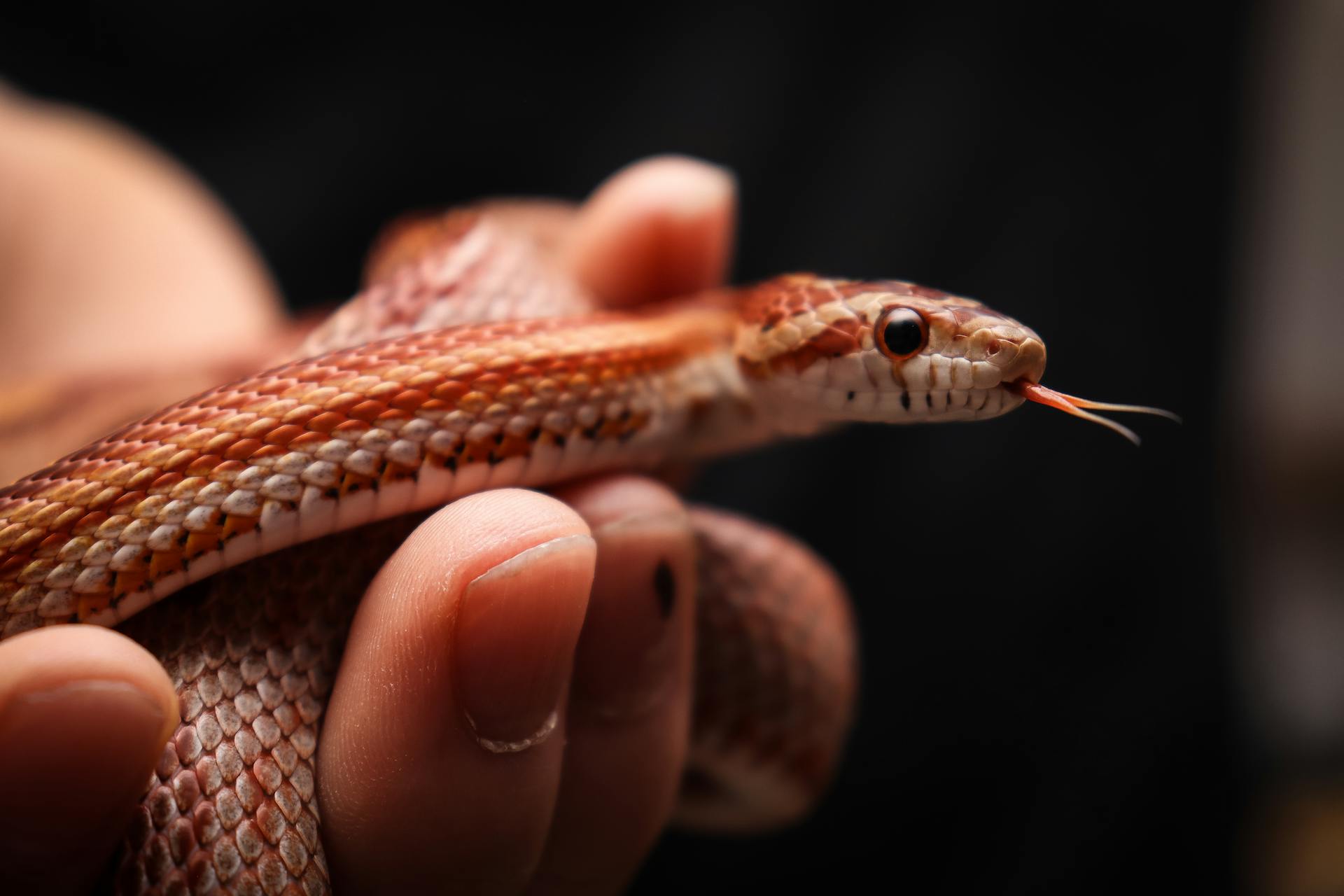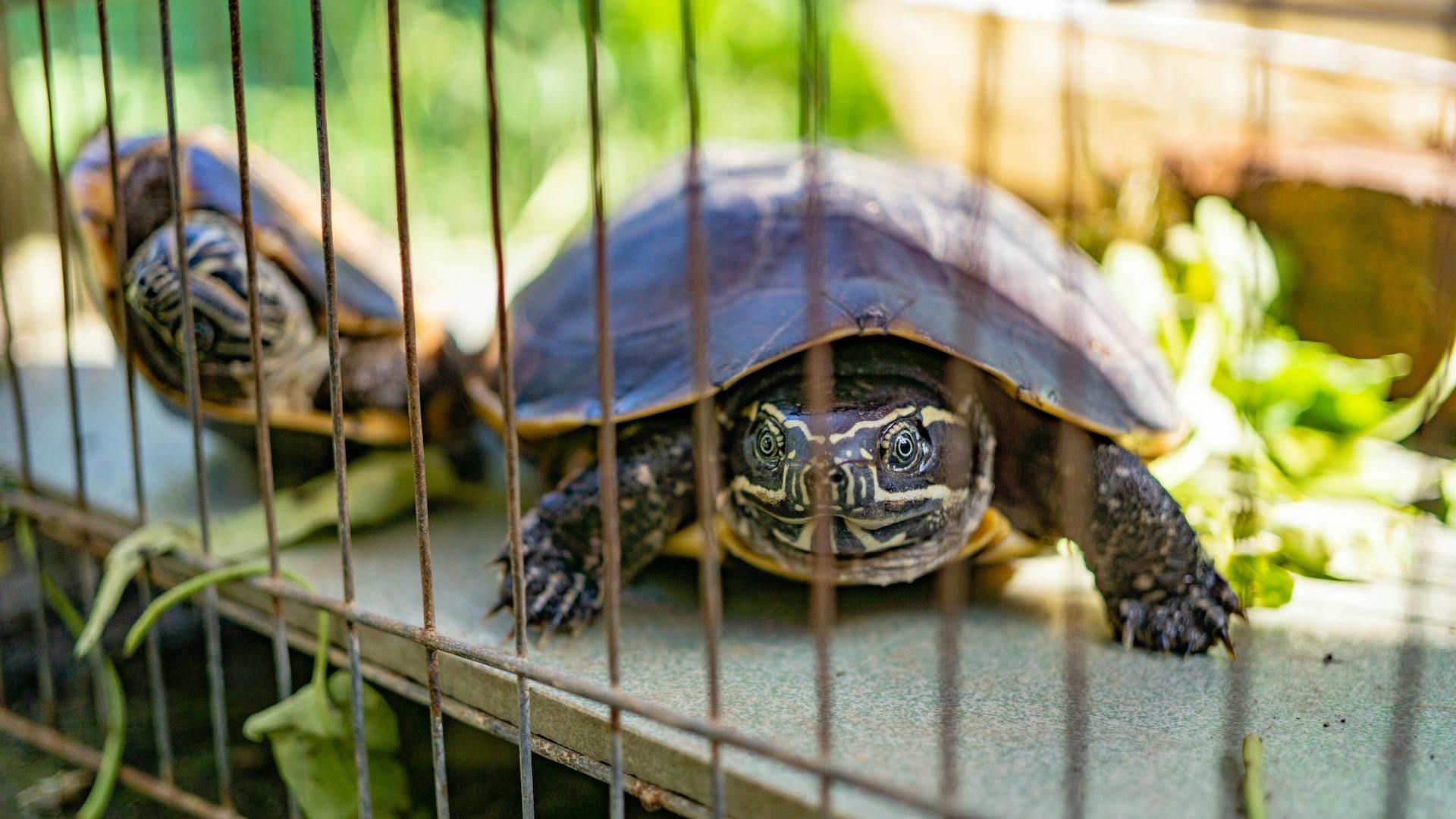The world of exotic reptile keeping continues to grow in popularity, with enthusiasts welcoming these fascinating creatures into their homes.
Unlike traditional pets, reptiles have highly specialized dietary needs that vary dramatically between species. Understanding the proper feeding schedule for your scaly companion is crucial not only for their physical health but also for their psychological well-being.
Improper feeding—whether too frequent or too infrequent—can lead to serious health complications, including obesity, malnutrition, and metabolic bone disease.
This comprehensive guide will explore the feeding requirements of various exotic reptiles, helping you develop an optimal nutrition plan for your unique pet.
Understanding Reptile Metabolism
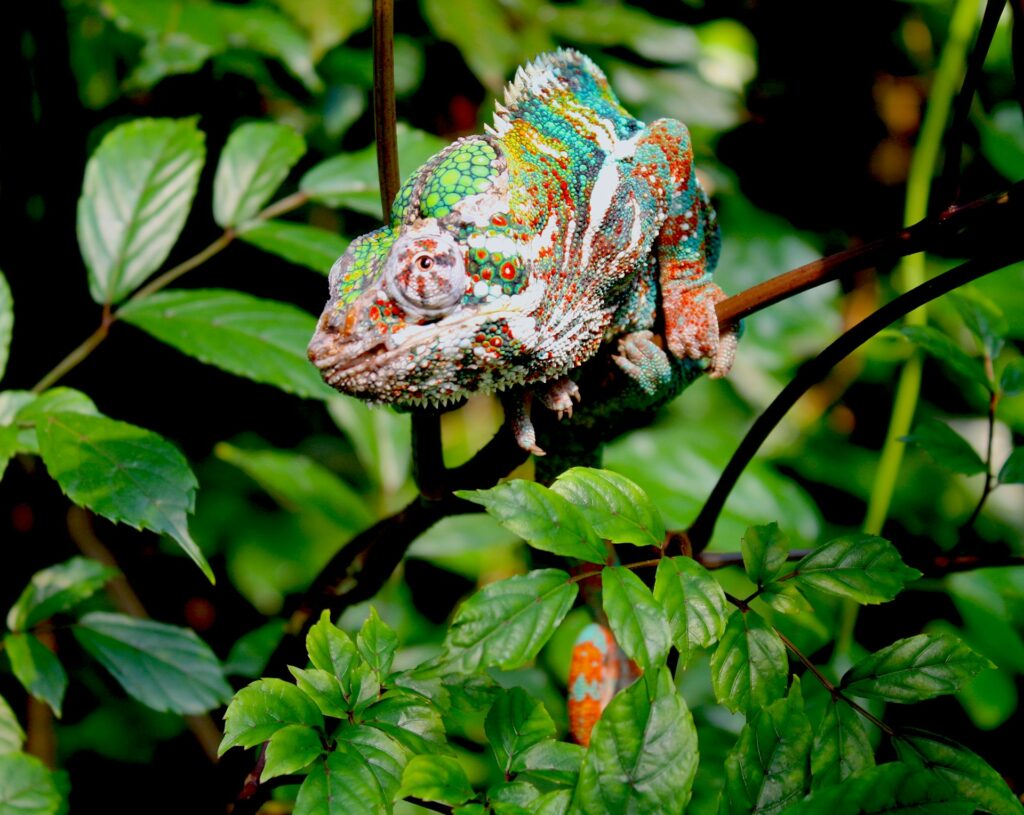
Reptiles possess fundamentally different metabolic systems compared to mammals, which directly impacts their feeding requirements.
As ectothermic (cold-blooded) animals, reptiles rely on external heat sources to regulate their body temperature, which in turn affects their digestive efficiency and metabolic rate.
When kept at proper temperatures, most reptiles have remarkably efficient digestive systems that extract maximum nutrition from their food. This efficiency means they typically require less frequent feeding than mammals of comparable size.
Additionally, reptile metabolism varies significantly between species, with some being high-energy foragers requiring daily meals, while others are ambush predators naturally adapted to infrequent, large meals.
Understanding these metabolic differences forms the foundation for establishing appropriate feeding schedules.
Bearded Dragon Feeding Schedules
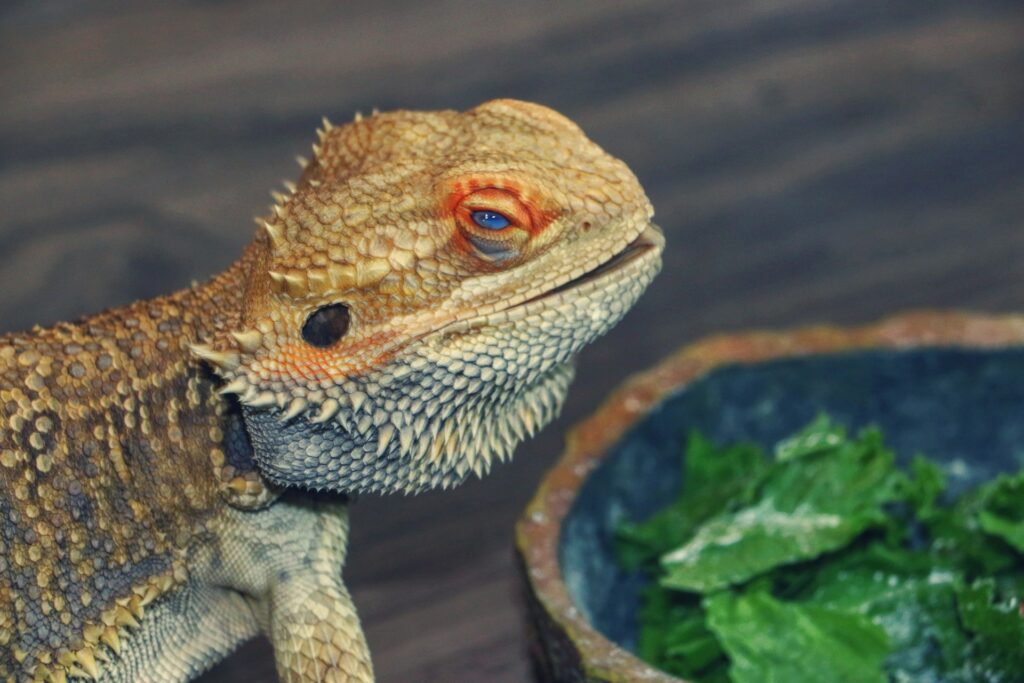
Bearded dragons undergo significant dietary shifts throughout their lifespan, requiring adjustments to their feeding frequency.
Baby bearded dragons (0-3 months) have rapid growth requirements and should be fed 3-5 times daily with small, appropriately sized insects and finely chopped vegetables.
Juvenile dragons (3-12 months) continue growing rapidly but can transition to 2-3 feedings daily with a gradually increasing ratio of plant matter to insects.
Adult bearded dragons (12+ months) thrive on a primarily vegetarian diet (70-80%) supplemented with occasional insects, typically requiring only one feeding per day.
During brumation periods (a hibernation-like state), beardie appetites decrease substantially, and feeding frequency should be reduced accordingly while monitoring weight to prevent unhealthy losses.
The key to proper bearded dragon nutrition is adapting the feeding schedule to reflect their natural age-related dietary changes.
Ball Python Feeding Requirements
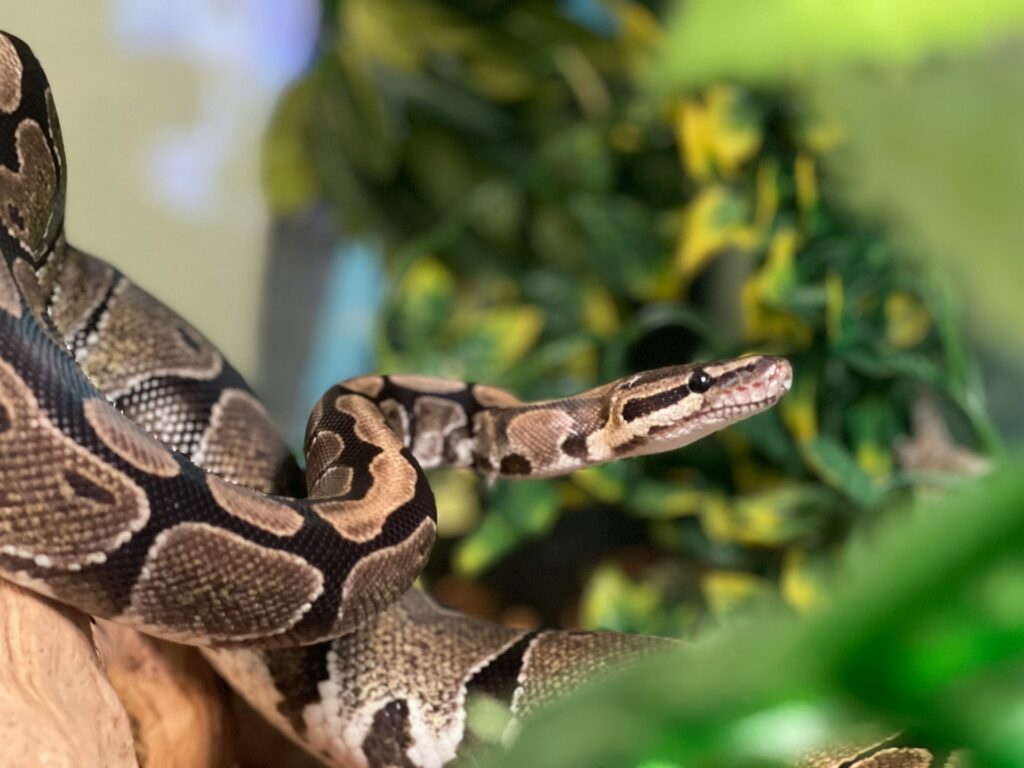
Ball pythons epitomize the ambush predator feeding strategy, consuming relatively large meals with extended digestion periods.
Hatchling ball pythons (under one year) typically require feeding once every 5-7 days, with prey items approximately 10-15% of the snake’s body weight.
Juvenile pythons (1-3 years) generally maintain a similar schedule but with appropriately larger prey items.
Adult ball pythons (3+ years) with established healthy weight can be fed less frequently, typically every 7-14 days, depending on their metabolism and activity levels.
It’s important to note that ball pythons may occasionally refuse food for extended periods, particularly during seasonal changes or breeding season, which is often normal behavior requiring patience rather than force-feeding.
Providing appropriate prey size is as important as frequency—the prey item should create a noticeable but not dramatic bulge in the snake’s body after consumption.
Leopard Gecko Feeding Patterns

Leopard geckos maintain an insectivorous diet throughout their lives, with feeding frequency closely tied to their age and growth stage.
Hatchling leopard geckos (0-6 months) have high nutritional demands and should be offered appropriately sized insects daily to support their rapid development.
Juvenile geckos (6-12 months) can transition to feeding every other day as their growth rate begins to stabilize.
Adult leopard geckos (12+ months) typically thrive with a feeding schedule of 2-3 times per week, with each meal consisting of 6-7 appropriately sized insects.
During the winter months or when temperatures drop, leopard geckos may naturally reduce their food intake as part of their evolutionary programming, which should be accommodated rather than forced.
All feeder insects should be gut-loaded (fed nutritious foods) and dusted with calcium and vitamin supplements according to a regular schedule to prevent nutritional deficiencies.
Chameleon Species and Their Unique Feeding Needs

Chameleons represent some of the most specialized feeders among reptiles, with high metabolism rates requiring consistent feeding schedules.
Veiled chameleons, among the most commonly kept species, benefit from daily feeding as juveniles, transitioning to 4-5 times weekly as adults.
Panther chameleons typically maintain slightly higher metabolic demands, often requiring feeding 5-6 times weekly throughout adulthood.
The smaller Jackson’s chameleons generally thrive with 4-5 feedings weekly, consisting primarily of smaller insect varieties.
Unlike many reptiles, most chameleon species rarely benefit from fasting periods and can experience rapid health declines if regular feeding is interrupted.
Hydration plays a crucial role in chameleon digestion, making proper misting and drinking opportunities essential components of a healthy feeding routine.
Tortoise Feeding Frequencies
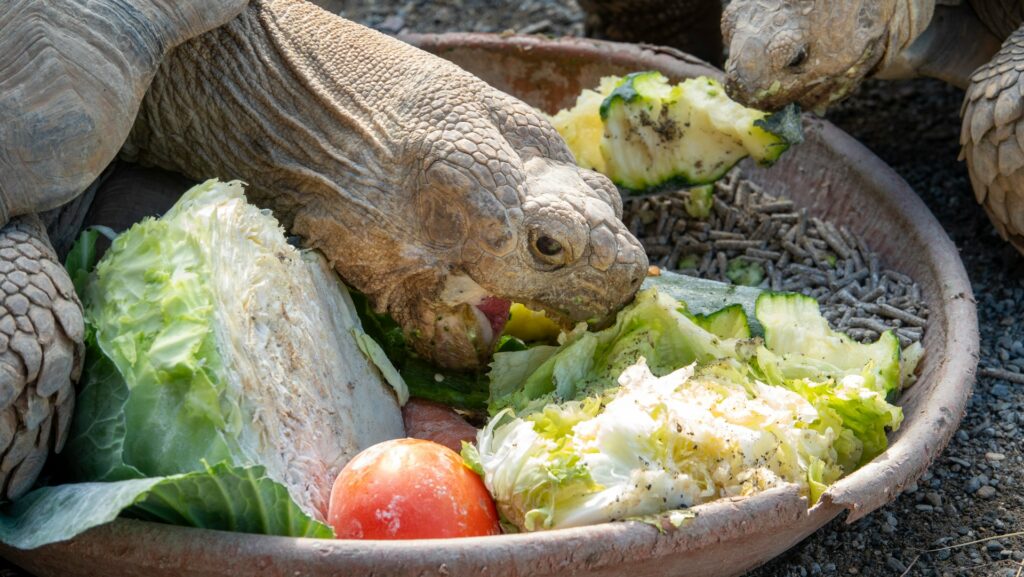
Tortoises exemplify herbivorous reptiles with feeding schedules that vary significantly between species and age groups.
Mediterranean species like Russian and Greek tortoises naturally evolved in resource-scarce environments and typically thrive with 4-5 feedings weekly as adults, focusing on high-fiber, low-protein plant matter.
Tropical species such as Red-footed and Yellow-footed tortoises require more frequent feeding—usually 5-6 times weekly—with a more varied diet including occasional fruit and protein sources.
Juvenile tortoises of all species generally require daily feeding to support healthy shell and bone development during their critical growth phases.
Seasonal variations should be considered for most tortoise species, with reduced feeding during cooler months to mimic natural cycles, particularly for temperate species that might naturally brumate.
A common mistake in tortoise care is overfeeding fruit and protein sources, which can lead to shell deformities and kidney problems over time.
Monitor Lizard Dietary Schedules
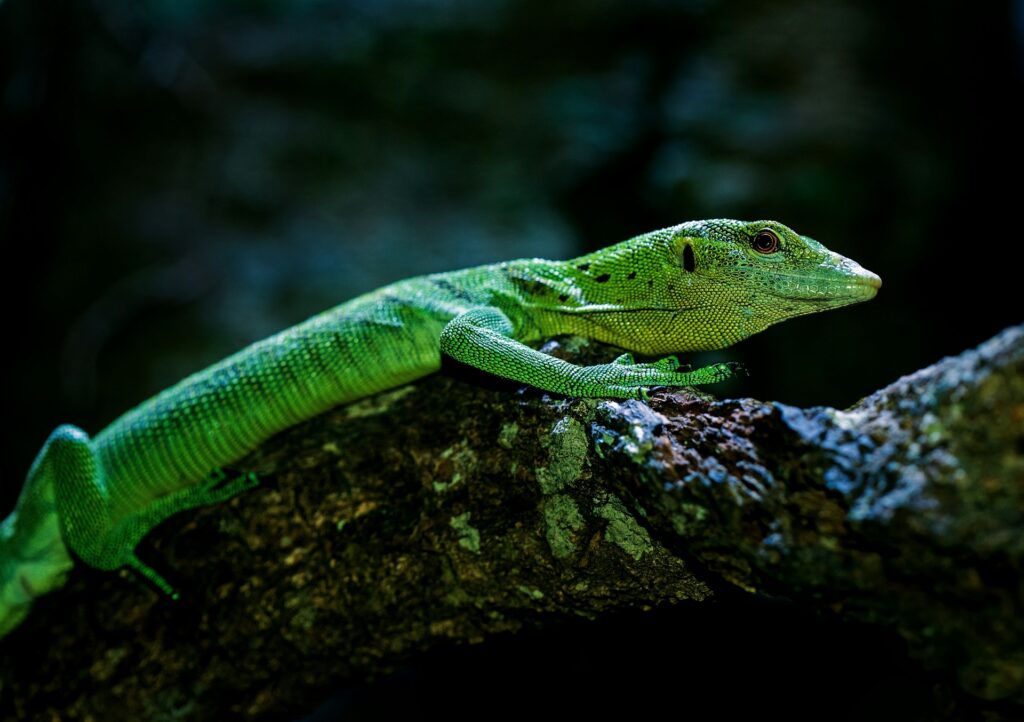
Monitor lizards represent the active forager archetype among reptiles, with correspondingly higher caloric requirements compared to many other species.
Juvenile monitors of most species require daily feeding to fuel their exceptional growth rate, with appropriate portions being roughly 5-10% of their body weight. Subadult monitors benefit from a transition period of feeding every other day while continuing to provide nutritionally dense meals.
Adult monitors of smaller species (such as Ackies and Timor monitors) generally thrive with feeding schedules of 2-3 times weekly, while larger species like Savannah or Water monitors might require only 1-2 substantial meals weekly once fully grown.
Variety is particularly important for monitor lizards, with most species benefiting from a rotation of whole prey items, eggs, appropriately sized insects, and for some species, plant matter in varying proportions.
Unlike some reptiles, monitors display clear hunger signals through increased activity and foraging behaviors, which can help guide feeding frequency adjustments.
Crested Gecko and Other New Caledonian Gecko Feeding
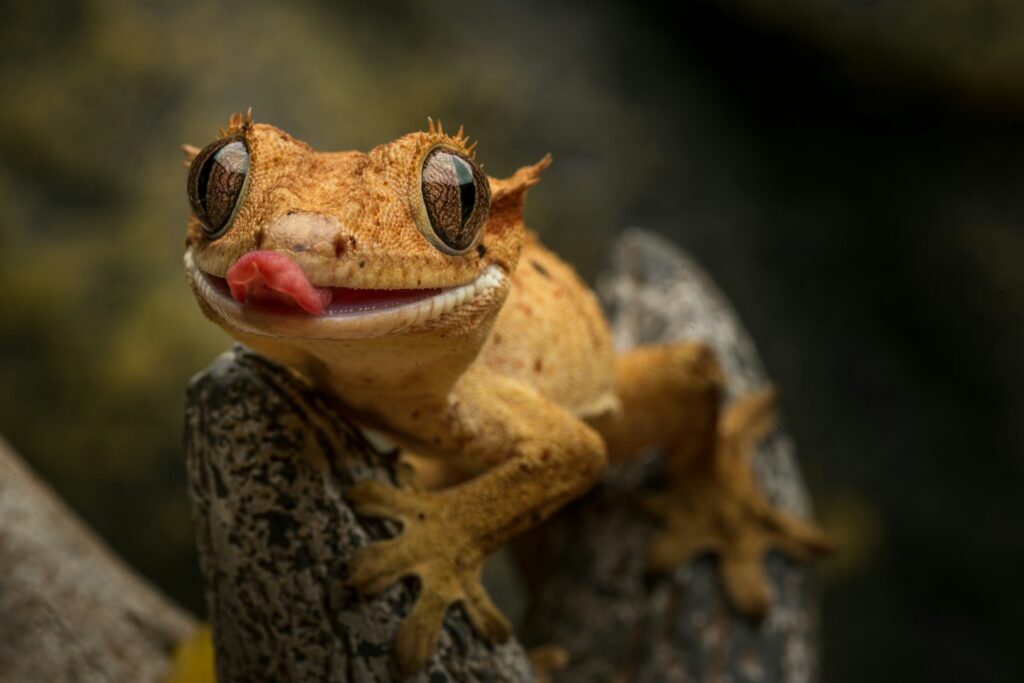
Crested geckos and their New Caledonian relatives (gargoyle, leachie, and chahoua geckos) share similar feeding requirements centered around fruit-based diets supplemented with insects.
These species benefit from having commercially prepared crested gecko diet (CGD) available in their enclosures for 2-3 nights weekly, removing the food during the day to prevent spoilage.
Insect feedings can be offered 1-2 times weekly for adults, with juveniles receiving slightly more frequent insect offerings to support growth.
Unlike many reptiles, these geckos naturally consume small amounts regularly rather than gorging on large meals, making portion control important to prevent obesity.
Their natural feeding strategy involves licking fruit and nectar rather than consuming large pieces, which is why commercial diets mixed to a smoothie-like consistency work effectively for these species.
Seasonal adjustments are minimal for these geckos, though slight reductions during cooler months may align with their natural behavior.
Blue-Tongued Skink Feeding Schedule
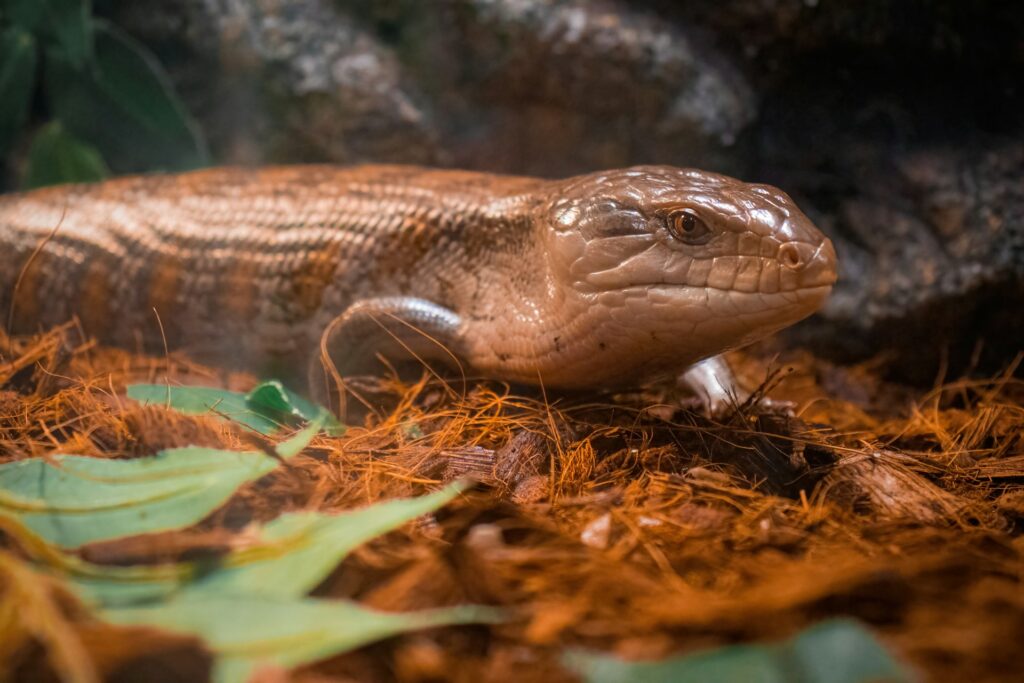
Blue-tongued skinks represent omnivorous reptiles requiring a balanced approach to feeding frequency and composition.
Juvenile blue-tongues grow rapidly and benefit from daily feeding, with appropriately sized portions that prevent obesity while supporting development.
Adult specimens typically thrive on a feeding schedule of 2-3 times weekly, with each meal consisting of a mixture of protein sources (insects, cooked egg, lean meats) and a larger proportion of vegetables and greens.
Special attention should be paid to the calcium:phosphorus ratio in their diet, particularly for growing juveniles and breeding females.
Australian blue-tongued skink species (such as Northern and Eastern) generally have slightly different dietary needs compared to Indonesian species, often requiring more protein and tolerating slightly higher fruit content.
A key indicator of appropriate feeding frequency is maintaining proper body condition—blue-tongues should display a visible neck region and slight tuck behind the ribs without prominent hip bones or excessive skin folds.
Uromastyx Feeding Considerations
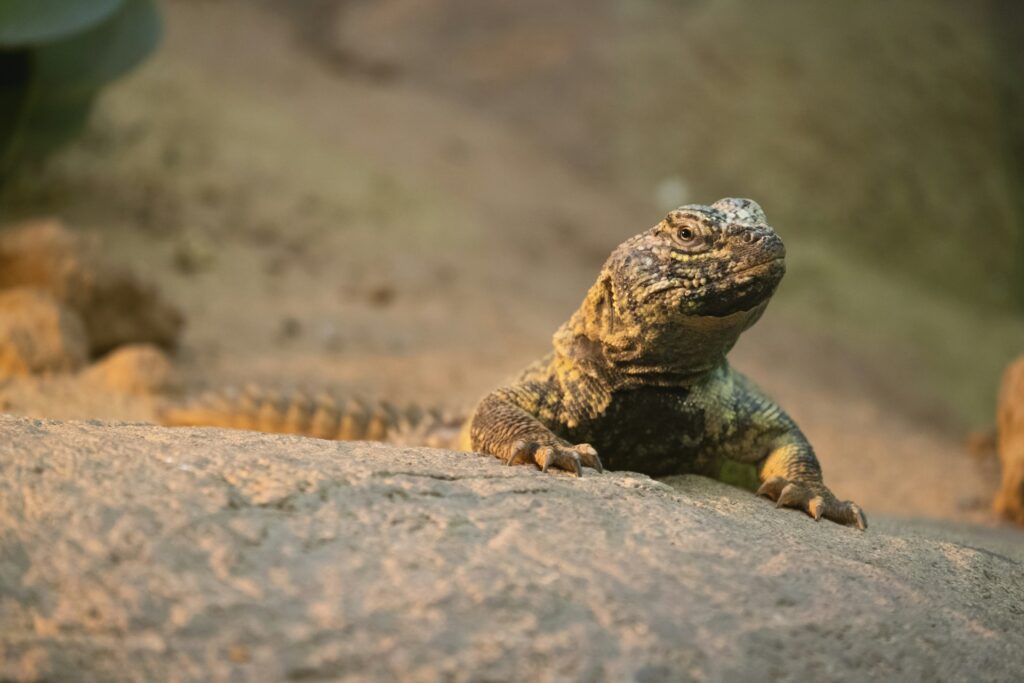
Uromastyx lizards stand out among reptiles for their heavily herbivorous diet as adults, with feeding frequency reflecting their desert adaptations.
Uromastyx require daily vegetable offerings supplemented with small amounts of insect protein about twice weekly to support proper growth.
Adult specimens thrive with vegetable offerings provided 4-5 times weekly, consisting primarily of leafy greens, squashes, and specialized high-fiber desert plant matter when available.
Unique to Uromastyx is their natural adaptation to consume seeds and legumes in the wild, making small amounts of lentils, millet, and other seeds appropriate dietary components offered 1-2 times weekly.
During cooler months or brumation periods, Uromastyx naturally reduce their feeding activities, sometimes declining food entirely for several weeks, which should be accommodated rather than forced.
Their specialized digestive system processes plant matter efficiently, requiring consistent access to UVB lighting to properly metabolize the calcium present in their vegetable-based diet.
Green Iguana and Herbivorous Lizard Feeding
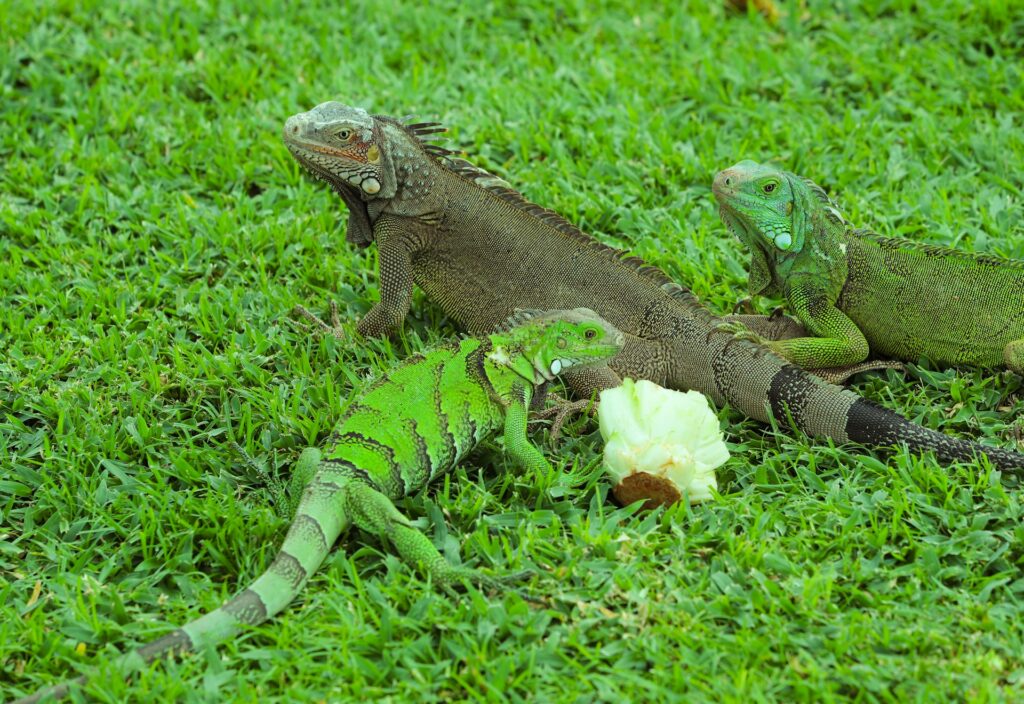
Green iguanas exemplify large herbivorous lizards with specialized feeding requirements centered around plant-based nutrition.
Juvenile green iguanas require daily feeding with finely chopped, calcium-rich greens and vegetables to support their substantial growth potential.
Adult iguanas typically maintain health with 4-5 feedings weekly of appropriate leafy greens including collards, dandelion, mustard greens, and limited amounts of fruits as occasional treats.
Contrary to common misconceptions, adult green iguanas should receive minimal to no animal protein, as their digestive systems aren’t designed to process it efficiently, potentially leading to kidney issues over time.
Seasonality plays a role in iguana feeding behavior, with many specimens naturally reducing consumption during winter months even in captivity with constant temperatures.
A critical aspect of iguana feeding involves providing proper calcium:phosphorus ratios through careful food selection and supplementation to prevent metabolic bone disease, particularly during growth phases.
Seasonal Adjustments to Feeding Schedules
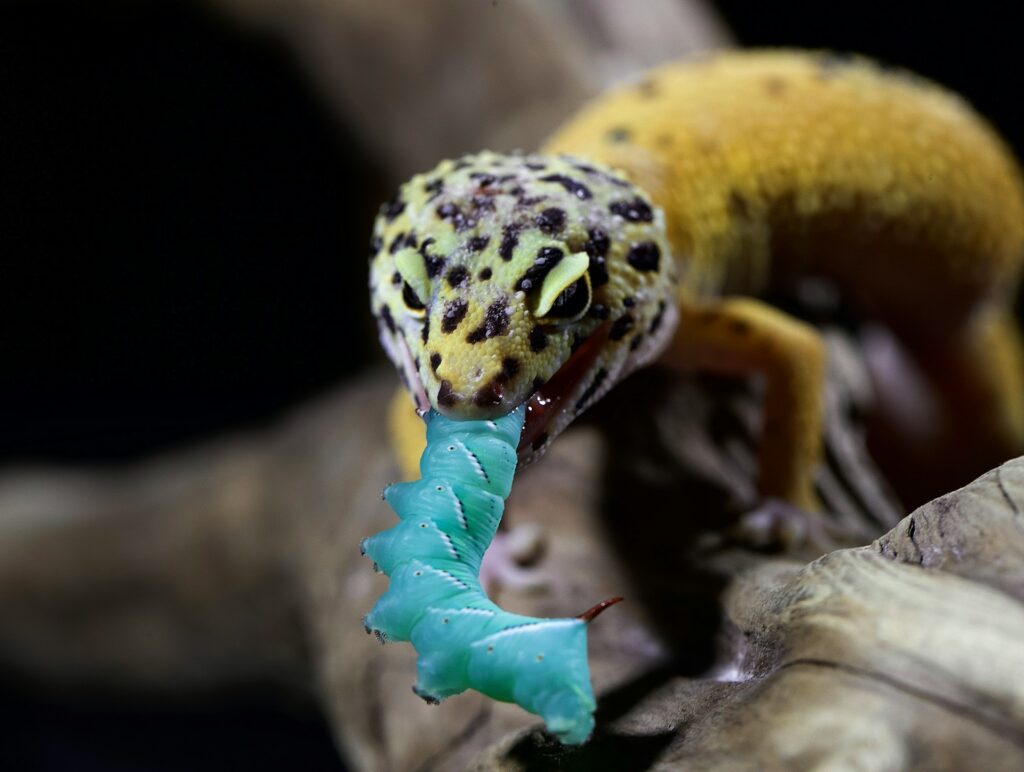
Many reptiles exhibit natural seasonal variations in feeding behavior that should be incorporated into captive care schedules.
Temperate species including most tortoises, bearded dragons, and some snakes typically reduce food consumption during fall and winter months, even when ambient temperatures remain constant.
Breeding season often triggers changes in feeding behaviors, with females of many species requiring increased nutrition before egg production, while males of some species may reduce feeding during active breeding periods.
Brumation—a hibernation-like state—represents the most significant seasonal feeding adjustment, during which many species naturally stop eating entirely for weeks or months.
Forcing food during natural fasting periods can cause digestive complications, making it important to monitor weight and hydration while respecting these evolutionary patterns.
Gradual transitions between seasonal feeding schedules allow reptiles’ digestive systems to adjust appropriately, preventing stress and potential health complications.
Signs of Inappropriate Feeding Frequency
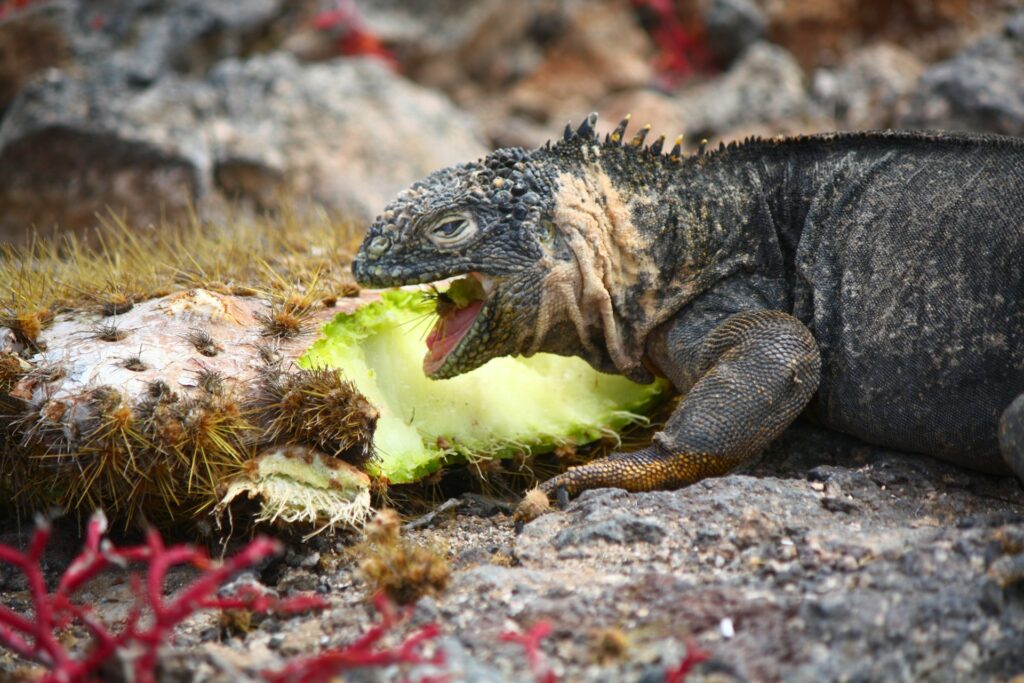
Recognizing indicators of improper feeding schedules is essential for making timely adjustments to reptile care. Overfeeding typically manifests through obesity markers including fat deposits around the neck and limbs, reduced activity levels, and in extreme cases, difficulty moving or breathing properly.
Underfeeding presents through gradual weight loss, prominent hip bones or spine, lethargy, and in severe cases, muscle wasting and weakness.
Regurgitation within 48 hours of feeding often indicates feeding items too large, feeding too frequently, or improper temperatures for digestion.
Abnormal fecal output—either constipation or diarrhea—frequently relates to feeding frequency issues, with constipation sometimes indicating inadequate hydration accompanying meals.
Many reptiles display behavioral changes when feeding schedules are inappropriate, including excessive begging behaviors with too infrequent feeding or food avoidance and hiding when offered food too frequently.
Providing appropriate feeding schedules for exotic reptiles requires understanding each species’ unique evolutionary adaptations and natural history.
By aligning captive feeding practices with these natural patterns—while making allowances for the differences between wild and captive environments—keepers can promote optimal health and longevity in their scaly companions.
Remember that individual variation exists even within species, making observation and adjustment crucial components of responsible reptile keeping.
By paying careful attention to your reptile’s behavior, body condition, and overall health, you can fine-tune feeding frequencies to meet their specific needs, ensuring they thrive under your care for years to come.


